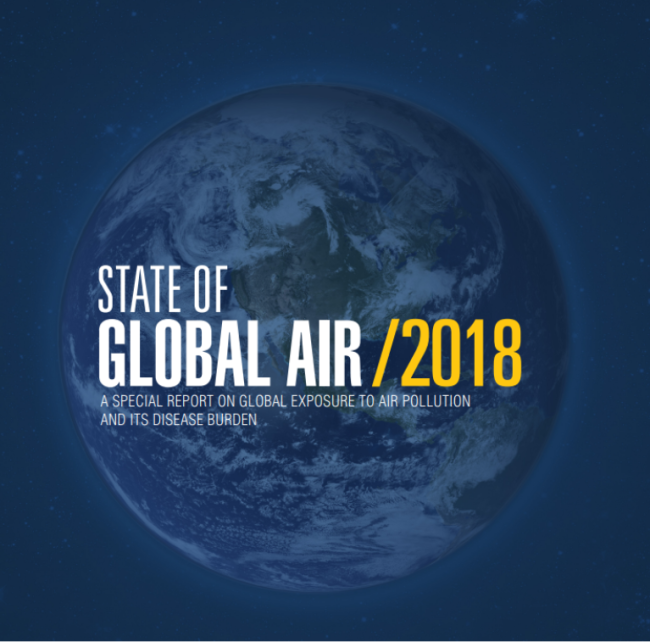
HEI has issued State of Global Air 2018 — the first update of the annual report and interactive website launched in 2017 with the aim of providing “one-stop shopping” for the latest trends in air quality and its impact on human health around the world.
For the first time, the 2018 report and website include worldwide estimates of exposure and health burdens from burning of solid fuels inside people’s homes. In 2016, a total of 2.5 billion people — one in three global citizens — were exposed to household air pollution from the use of solid fuels (for example, wood, charcoal, coal dung, or other biomass) for cooking and heating. Most live in low- and middle-income countries in Asia and Africa, and face a double burden: exposure to both indoor and outdoor air pollution.
The Global Burden of Disease (GBD) project found that exposure to fine particulate matter was the 5th leading contributor globally to early deaths; household air pollution was ranked 10th. Air pollution is the leading environmental risk factor, contributing to more deaths than malaria or HIV/AIDS.
On the updated interactive website, visitors can explore and compare trends in air quality and health from 1990 to 2016 from the GBD project. The site provides both air quality and health data for countries and regions of the world. Data now cover ambient particulate matter, ozone, household air pollution, and total air pollution (a combination of those three). Visitors can also find information on the major sources of outdoor air pollution, with a focus on China and India.
The State of Global Air is a collaborative effort among HEI, the Institute for Health Metrics and Evaluation at the University of Washington, and the University of British Columbia.